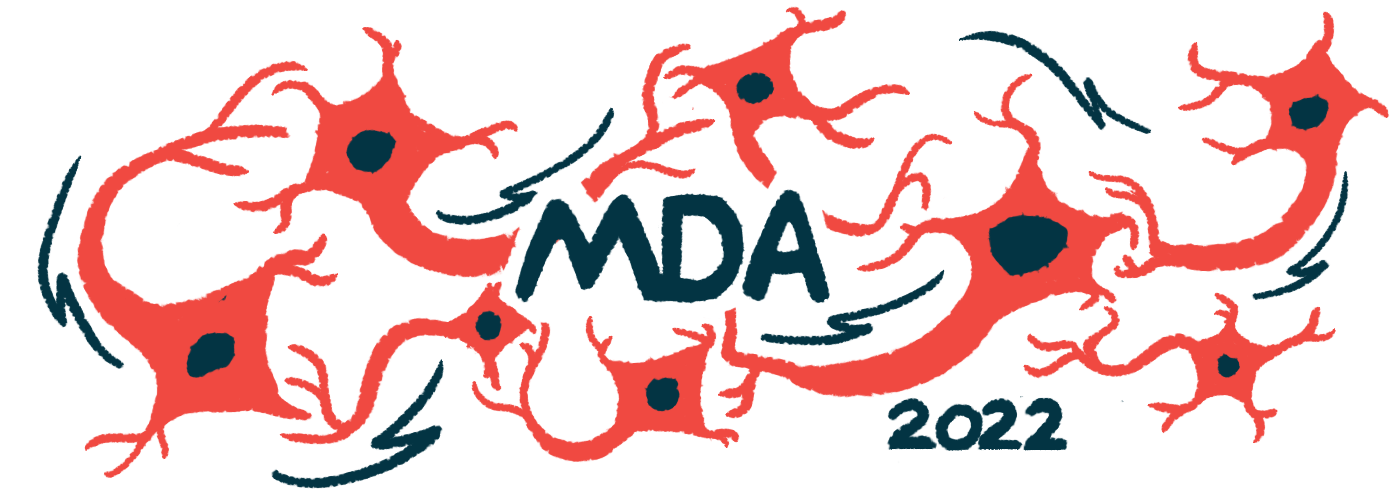#MDA2022 – Newborns Treated With Evrysdi Standing, Walking 1 Year Later

In the RAINBOWFISH trial testing oral Evrysdi (risdiplam) in babies with spinal muscular atrophy (SMA) but no evident symptoms, most of the seven children treated for at least one year were able to stand and walk within developmentally normal windows.
These new data were presented at the Muscular Dystrophy Association (MDA) 2022 Annual Meeting in the poster, “RAINBOWFISH: Preliminary Efficacy and Safety Data in Risdiplam-treated Infants with Presymptomatic SMA.” The study was funded by Roche, which markets Evrysdi.
Evrysdi, a daily oral liquid therapy, is widely approved to treat SMA in patients ages 2 months and older. It works to increase the production of the SMN protein, the lack of which causes SMA, by modulating the activity of a gene called SMN2.
RAINBOWFISH, a Phase 2 clinical trial (NCT03779334), is evaluating Evrysdi’s safety and effectiveness in babies, enrolled before they were 6 weeks old, diagnosed with SMA based on genetic tests but without evident disease symptoms (asymptomatic). As of Feb. 22, worldwide recruitment for the trial was complete with a total of 26 infants in the study.
Data presented as of a cut-off date of July 1, 2021 covered 18 babies being treated with Evrysdi. Their median age at first dose was 26.5 days. Seven of these infants had two SMN2 gene copies, while 11 had three or more SMN2 copies. Generally, a higher SMN2 copy number is associated with less severe SMA.
Most babies (72%) were initially diagnosed through newborn screening, and others through family history (28%).
Safety data have been generally positive, with most reported adverse events — such as fevers, diarrhea, and nasal congestion — attributable to normal sickness in young babies rather than to Evrysdi’s use. No serious adverse events have been recorded.
Seven of the 18 children have been treated for at least a year. Four of them have two SMN2 gene copies, while the other three have three or more copies. (Four others have been treated for six months to one year, and seven for less than six months.)
All three children with three or more SMN2 copies have been able to stand and walk unaided within a normal developmental timeframe of around 12 to 16 months of age.
Among the four children with two SMN2 copies, two had compound muscle action potential (CMAP) amplitudes of less than 1.5 milivolts at the trial’s start. This means these two children had detectable evidence of motor neuron dysfunction when starting treatment, even though they had no overt SMA symptoms.
Both these children have gained the ability to sit independently, though this occurred later than is typical, at around age 12 months. As of July 1, they were not able to crawl or stand, but were still within age windows for normal development of these milestones.
The other two children with two SMN2 copies and normal CMAP amplitudes were both able to sit and crawl within developmentally normal windows. One was able to stand and walk at around age 14 months, which again is within the normal developmental range. The other started standing at about 18 months old, which is later than normal, and has not yet started to walk unassisted. But this child has started “cruising,” with a shuffling walk while leaning on furniture or other supports.
After a year of treatment, five of the seven babies — all except the two with low CMAP amplitudes — have reached the maximum (best) possible score on the CHOP INTEND, a standardized assessment of motor abilities in infants with severe motor impairments.
All seven children have retained the ability to swallow after a year of treatment and are eating exclusively by mouth.
RAINBOWFISH findings could support a request to extend Evrysdi’s use to presymptomatic infants, and it aims to determine the best dose for babies younger than 2 months of age.
Editor’s note: The SMA News Today team is providing coverage of the 2022 MDA Clinical and Scientific Conference March 13–16.








